Coppertone Sedum has a split personality. It is a dramatic, gold, and coral succulent that grows into short bushes and spreads as ground cover when grown outdoors. Indoors, it is a cute but easily overlooked succulent, with leaves like green bananas just beginning to ripen.
Wherever you grow it, Coppertone succulent is a resilient, low-maintenance plant that is content to be ignored.
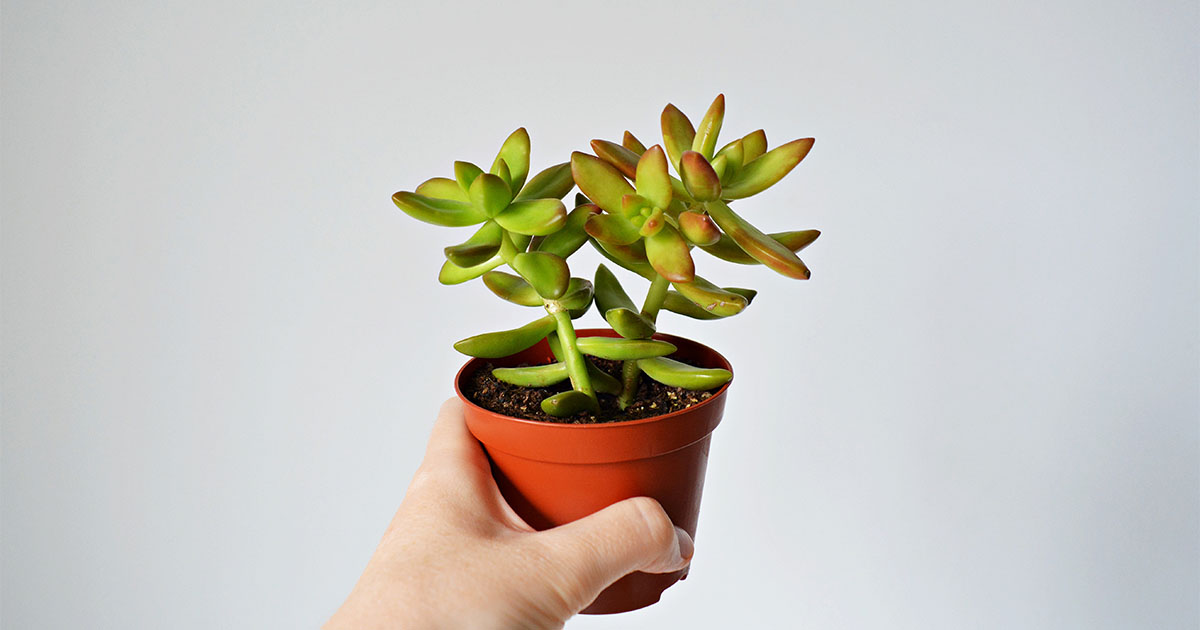
Disclosure:It is important you understand that we may receive commissions when you click our links and make purchases. For more info see our disclosure statement.
Quick Guide to Coppertone Sedum
| Sun requirements | Full sun preferred, some shade tolerated |
| Hardiness/Zone | Hardy outdoors only in Zones 10+ |
| Water needs | Minimal; drought-tolerant |
| Toxicity | Non-toxic to humans and pets |
| Primary growth season | Spring and Fall; dormant in winter/summer |
| Typical sizes | Indoors rosettes grow up to 3 inches wide and 8 inches tall. When grown outdoors, it reaches up to 2-3 feet, either bushing or trailing |
Growing Requirements for Coppertone Sedum
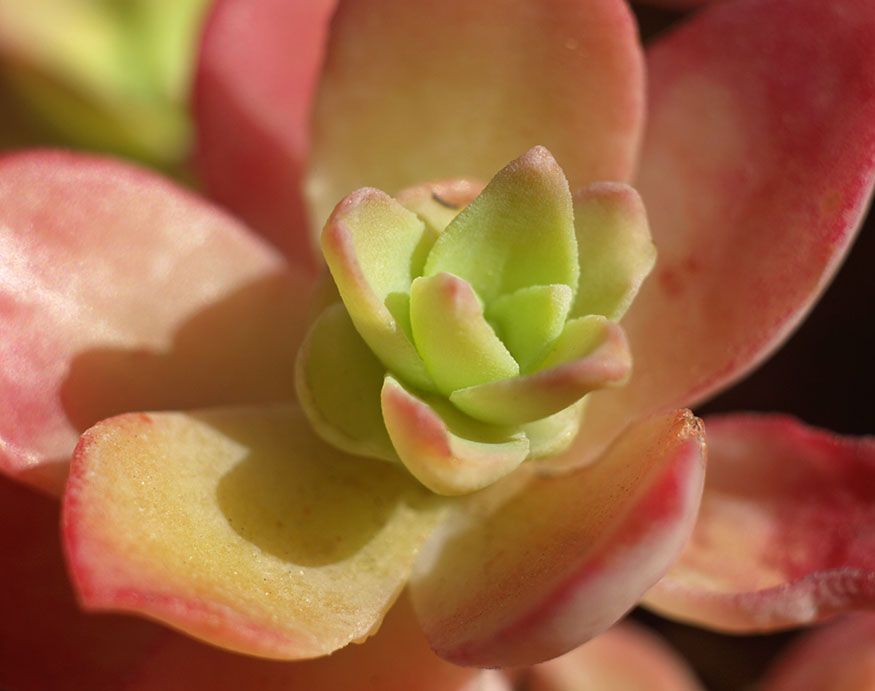
Also known as Coppertone Stonecrop, the Coppertone Sedum is a short, spreading succulent made of fleshy-leaved rosettes. It isn’t a great fit for every growing environment, but under the right conditions, it is extraordinary. Its golden color contrasts beautifully with the greenery of your garden, and mature plants produce pretty white flower clusters in the spring.
Sedum Nussbaumerianum (a.k.a. Coppertone Sedum) is easily mixed up with a very similar-looking succulent named Sedum Adolphii (a.k.a. Golden Sedum).
When grown indoors, both have leaves that are yellowish-green with reddish tips that form short rosettes. They also turn a rosy yellow in full, outdoor sun.
Comparing the two plants, the leaves of the golden sedum are yellower, with blunter tips than the Coppertone Sedum. The Coppertone Sedum’s leaves are shinier and smaller than the golden sedum.
Where To Plant
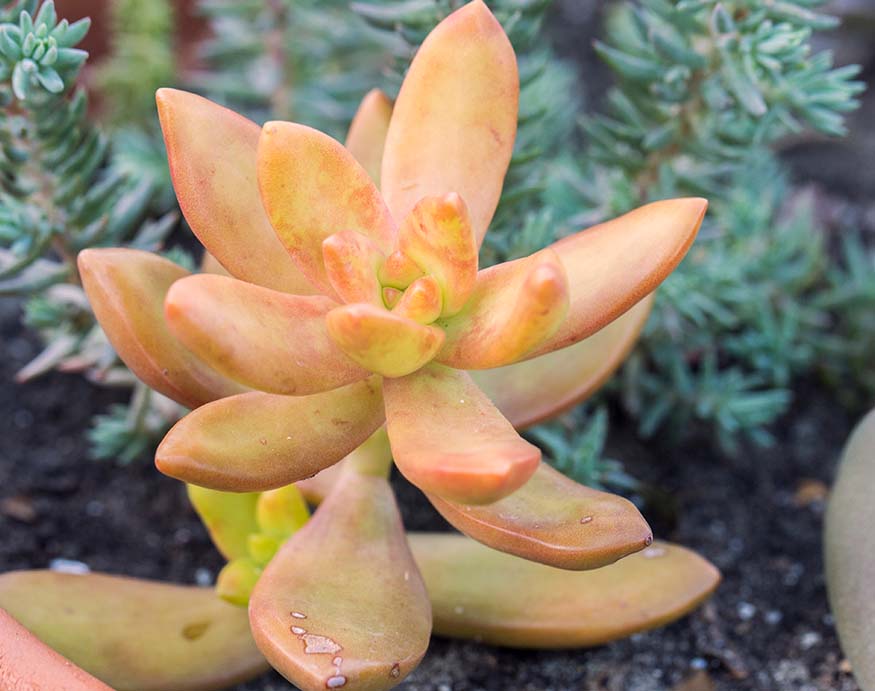
Coppertone Sedum is native to Mexico and is not cold-hardy. Although a mature plant may survive an occasional quick dip below freezing, you should avoid planting it in the ground unless you live in USDA zone 10 or higher.
Planted outdoors in an appropriate climate, Coppertone Sedum shows its true colors both literally and figuratively. With adequate sunlight, the plant transforms from lime green to a beautiful orange-yellow, and the tips of the leaves turn a rosy red. It also grows larger than it does as a potted plant.
Coppertone Sedum will grow indoors in a pot. However, this will limit the plant, both in terms of size and color. Indoors, Coppertone Sedum tends to stay small and green.
Note: If you don’t live in the correct growing zone, you can still grow a Coppertone Sedum. Ideally, you should keep it outdoors in a pot for as much of the year and bring it indoors in the winter. It should stay in a south-facing window.
It may not turn fully golden with those accommodations, but the leaves will develop a pretty yellowish cast and rusty colored leaf tips.
Container and Soil
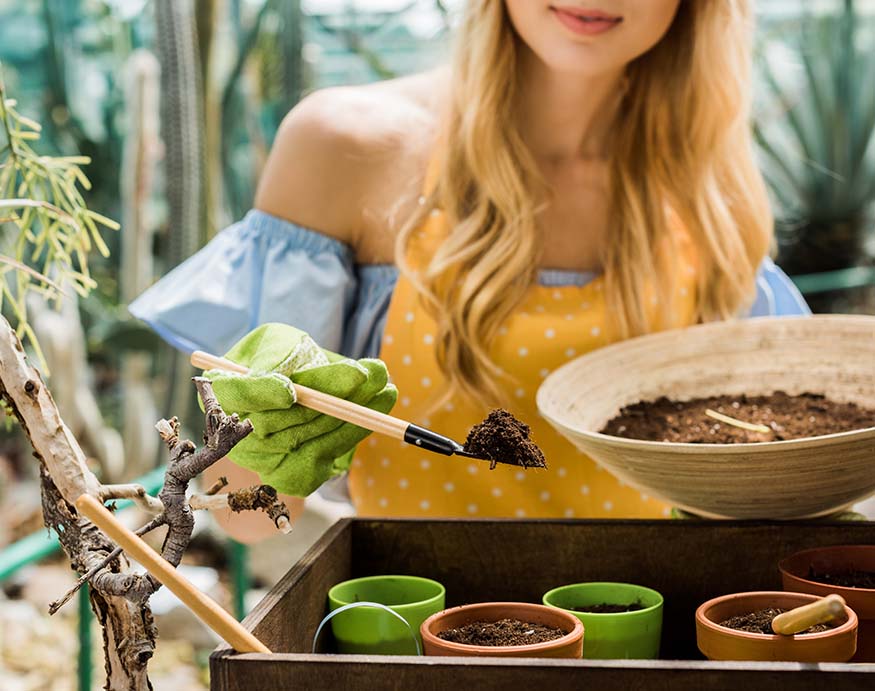
Like all succulents, Sedum Nussbaumerianum benefits from excellent drainage. That makes it a perfect fit for a rock garden or succulent garden. It wants full sun and well-draining, rocky soil.
If you can’t plant it in the ground in your area, use a pot with a large drainage hole in the bottom. An unglazed pot is ideal because it will absorb excess moisture from overwatering. Avoid using a pot that is too large for the plant. A large pot with a lot of soil will retain moisture for too long, encouraging root rot.
Use a well-draining succulent or cactus mix that includes perlite or pumice, or make your own potting medium. This is a simple recipe for a potting mix that will work well for succulents like sedums:
- Two parts potting soil,
- One part sharp/coarse sand (optional), and
- One part gritty amendment (such as perlite or pumice)
Watering
Overwatering succulents can cause leaf drop, root rot and put the plant at greater risk of opportunistic pests.
Sedum Nussbaumerianum is a naturally drought-resistant plant that wants to be dry between waterings. If the plant is outdoors, you may not need to water it all. Reportedly one of its nicknames is Coppertone “stonecrop” because stones are the only garden crop easier to grow than Sedums.
Note: When the plant is indoors, you’ll only want to water as needed every 2-4 weeks. During the plant’s winter dormancy, be especially careful not to over-water. Once a month should be plenty.
Spend some time handling your Coppertone Sedum’s pot while it is totally dried out until you have a good sense of its dry weight. Let it get that light again, or close to it, in between each watering.
The finger-tip test (pushing your finger in to feel that the soil is dry to a depth of one inch) may lead you to water this Sedum too often if you have a pot that retains water in the bottom.
When watering, you can use the “soak and dry” method or the “dunk and soak” method. Both methods require pots with drainage holes.
For the “soak and dry” method:
- Hold the plant over the sink and flood the pot with water
- Let it absorb, and then water it again. This will help you achieve maximum saturation.
Another option is the “dunk and soak” method:
- Lower the Coppertone Sedum’s pot down into a bucket filled with a few inches of water.
- Avoid filling the bucket with too much water, or the water displaced by the pot may rise high enough to flow over the top edge of the pot.
- Leave the plant in the water to soak and draw water up through the drain hole.
- It may take anywhere from a few minutes to an hour, depending on the size and type of pot. Remove it and let it drain.
Fertilizer and Maintenance
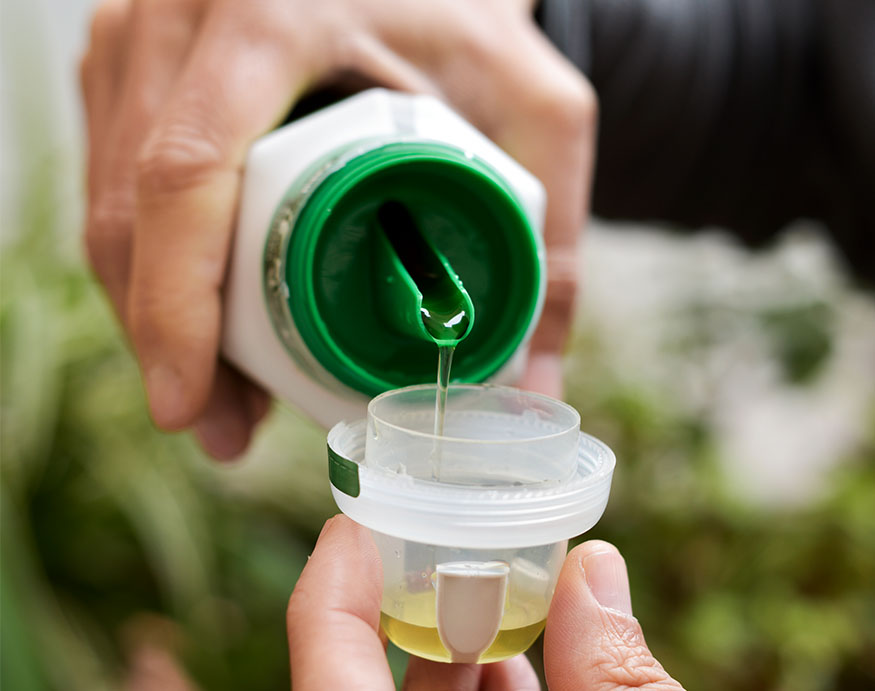
It is a good idea to repot your newly purchased Coppertone Sedum. That allows you to make sure the roots are healthy. You should cut away any unhealthy roots before replanting.
Repotting your new plant also means you can make sure it grows in a fresh, well-draining potting mix.
Note: You won’t need to fertilize Coppertone Sedum for the first year; it will get plenty of nutrients from the fresh soil. In the second year, fertilize your Sedum occasionally with a liquid cactus fertilizer, preferably organic, diluted to no more than half strength (a quarter strength works well).
Apply a few times a year during the growing season. Do not fertilize at all during winter dormancy.
If your Coppertone Sedum becomes leggy and overgrown, you can tidy it up by beheading it and replanting the tops.
- Use a sharp, sterile knife or clippers to cut the plant a couple of inches below the rosette at the end.
- Cure the plant’s stem in a dry location with good air circulation, out of direct sunlight, for several days.
- Then, stick the stem end into a pot full of fresh, succulent-appropriate potting mix and treat it gently, like any newly propagated plant.
coppertone succulent Propagation
Mid-spring is the best time for propagating your Coppertone Sedum, and the process couldn’t be more straightforward.
- Simply pick a healthy leaf near the base of the plant. Twist it off using your fingers, or if you prefer, you can use a sharp, sterile knife to remove it.
- Leave the leaves lying on top of a pot of dry potting mix to cure. Keep them dry and out of direct sunlight for several days. This will allow the raw area to heal over, forming a callus. This step is essential to avoid bacterial or fungal growth at the cut end.
- After curing, poke the callus-end of each leaf into the soil and water them.
Warning: Be especially careful not to overwater until they are established. You don’t want them to be soggy, but you also don’t want to let the potting mix dry out. You can give them more sunlight during this phase.
- After they are established, they should be returned to full indoor sunlight or planted outdoors (in an appropriate growing zone).
You can propagate cuttings or offsets (also known as chicks or pups) using basically the same method. Sedum Nussbaumerianum is a plant that loves to reproduce, so if you’ve never tried propagation before, this might be a fun plant to use for practice.
Try a coppertone succulent
Most of the time, you have to work hard to get the gold, but in the case of Sedum Nussbaumerianum, the opposite is true. Plant this succulent in the right outdoor location, forget about it, and before long, its golden glow will make your garden look like a million bucks.
What an AMAZING and informative article!! Thanks for this in depth explanation!